Himali Singh Soin
Static Range
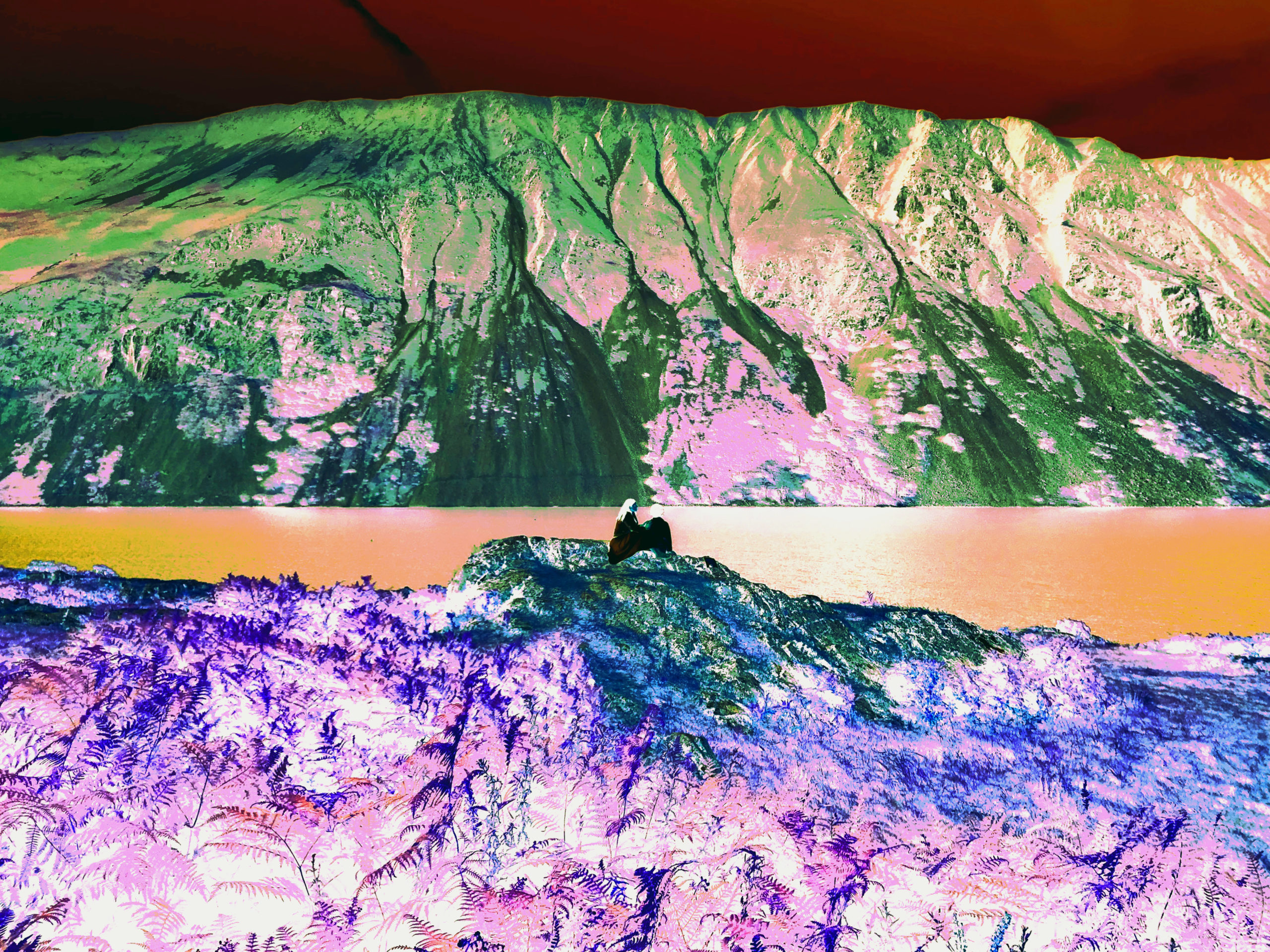
Himali Singh Soin, Static Range (2020-ongoing)
I have a kind of utopian dream of a future where we would have more affinities with the nonhuman, where we would be able to read and write the archive of the universe. The universe that we can access is not just a human log; we have to expand the view—so that we can have a play of languages, times, and shapes that can simultaneously read past and future, and the present can be expanded.
This is a story that begins and ends with ice. There are two poles, opposite and yet alike, and then there is another. The third pole, which is actually a mountain range, may have a nuclear device lodged somewhere inside its layers of snow and rock sediment. Simultaneously, somewhere across a melting Arctic landscape, there could be a set of love letters—perfectly preserved from a hot air balloon crash—beginning to emerge from thawed-out layers of geologic time. As we speak, a mollusk, a rock, and an invasive weed are transmitting tales of the anthropocene through media archives and ghosts that are always on the move, traveling between time zones.
Himali Singh Soin is an artist and writer who works in layers. Her stories are shaped by speculative pasts and imagined futures that give way to a dilated possibility of the present. She works where tools of empirical knowledge production start to break down; where a compass loses its sense of direction or a spectrometer sways under the weight of its carbon crush. In her narratives, which move across writing, video, publishing, planting, and performance, meaning fractures into multiples. Soin traces the interconnections between these disparate characters, climates, mythologies, and landscapes, weaving them together like a spider’s web, always generating new offshoots.
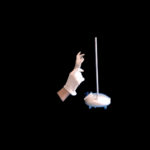
Himali Singh Soin, how to startle the unbelieving (2019)
“[Italo] Calvino says that fiction is participating in the truth,” Soin suggests. “It’s about finding patterns in archives. Once you start to read the gaps, you realize there’s always a particular type of story that’s being left out—it’s never arbitrary. It’s the same systems of violence, in(di)visible power structures and technologies of colonization that imprint themselves onto this pattern. I’m interested in using language and storytelling to manipulate and create glitches and stutters and pulses and pauses in these dominant narratives.”
I’m looking for information and listening for certain things, finding intersections, and finding a rhythm from the disjunctions. I think that whether you’re speaking about a human or a nonhuman—that both feel inadequate to try to understand one another. Therefore, an imaginative or poetic process is necessary in order to be understood. And by understanding, I mean to be able to participate in a conversation between these different forms of intelligence, these different forms of life.
![]()
In 2017, the artist journeyed to both polar circles. From here unfurls we are opposite like that (2017-2022): a multimedia search of mythologies for the poles, as told through the ghostly perspective of an omniscient elder, the ice. The video component of the project, rendered in two parts, unearths and refigures historical artifacts in order to build its own cosmology. Part one draws together the speculative possibilities of outer space research labs built on both poles and the abandoned township of Ny London, an arctic marble mining settlement established by the British Empire in 1911. This colonial outpost was swiftly abandoned a decade later, after the British discovered that permafrost-bitten marble shipped across the globe would inevitably crumble to dust. Part two burrows into the colonizer’s psyche—Soin plays with a Victorian-era phobia among the British public that a new ice age was imminent and would de-centre the globe.
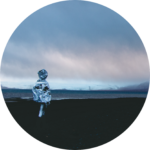
Himali Singh Soin, we are opposite like that (2017-2022)
Climate change is around us all the time, but we don’t allow ourselves to see it. I’m not even sure if I look at climate change directly, but that is kind of a tool for looking at my preconceptions. What are the assumptions about the world, and how do we move through them? How does it feel, in your body? Where do you find yourself, in that movement?
Across both videos, the artist appears as a kind of alien denizen of the Arctic. Employing sci-fi tropes, Soin establishes a kind of south-Asian futurism wherein her body, coated from head to toe in glistening mylar film sheets, reflects the mythic frozen landscape: two aliens communing with each other. Part II (2019) has a duality built into its own composition: it’s framed through two circles that serve as dual port holes, asking the viewer who is witnessing whom.
A haunting score composed by Soin’s partner and long-term collaborator, David Soin Tappeser, melds field recordings of smashing ice with the low vibrations of arctic wind. Its tempo is influenced by the shifting coordinates of this alien as she traverses the arctic landscape; the nervous pluckings of a string quartet create a sense of shifting epochs that’s at ease in its unease. As the Arctic and Antarctic landscapes dissolve into the atmosphere of a heating planet, secrets buried under layers and layers of deep time begin to surface. The voice of the ice becomes liquid, frothing with stories, hallucinogenic. Giving and taking across its tidal and temporal flows, water ultimately reveals all.
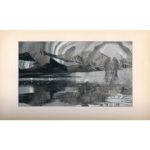
Himali Singh Soin, we are opposite like that (2017-2022)
So there was this geologist, Hans Jenny, who was working in the early 20th century to understand the movement of glaciers. His colleague noticed that the rocks at the top of the glacier were eroded in a way that was different to the rocks at the bottom, even though the ice was moving at the same speed. He thought, “maybe it’s the temperature,” so he decided to put the rock under the microscope. The conclusion was that the temperature wasn’t responsible for the different kinds of signs on top and bottom, it was actually the pressure. So that brought forward a whole new way of thinking about materiality.
The point being that we have so many different scales to look at any one object or any one event in history. We have this idea that the earth is simply a small part of the universe, and if we’re going to shift scales, let’s use the poetry of science in a way that shows how what seems to be small can actually turn out to be a universe of its own. I think of this as another way of thinking about self-determination: it gives us the freedom to look at different scales of observation.
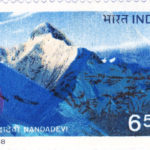
Himali Singh Soin, Static Range (2020-ongoing)
Another project, Static Range (2020-ongoing), takes equal refuge in the multiplicity of worlds afforded by storytelling. At its core is a real-life spy story: in the 1960s, the CIA teamed up with the Indian Intelligence Bureau to plant a nuclear-powered surveillance device upon Nanda Devi, the patron peak of the Himalayas, in order to intercept Chinese nuclear missile data. But an unexpected snowstorm foiled the operation, leaving the plutonium-powered device buried under heaps of snow and ice up in the range, never to be found. Soin’s multi-headed narrative begins with a letter to the mountain from the device, the conceit of which is borne from a photograph of the mountain that was captured by the artist’s father during an expedition in 1987 and became one of India’s national postage stamps.
“In storytelling, bringing in more voices is a form of love,” Soin suggests. “The thing that holds all these voices together is this force of attraction, and this force of attraction is love. And by love, I don’t mean romance, but a desire that is strong enough to hold together multiple, differing temporalities.”
I mean, I could go back to the story I wrote on the North Pole, saying that even if the box of love letters was never found, there was this love between these two people. And of course, they could still be there, because we don’t arrive on this planet with just a body. We’re spirit, we’re energy, we have many different lives.
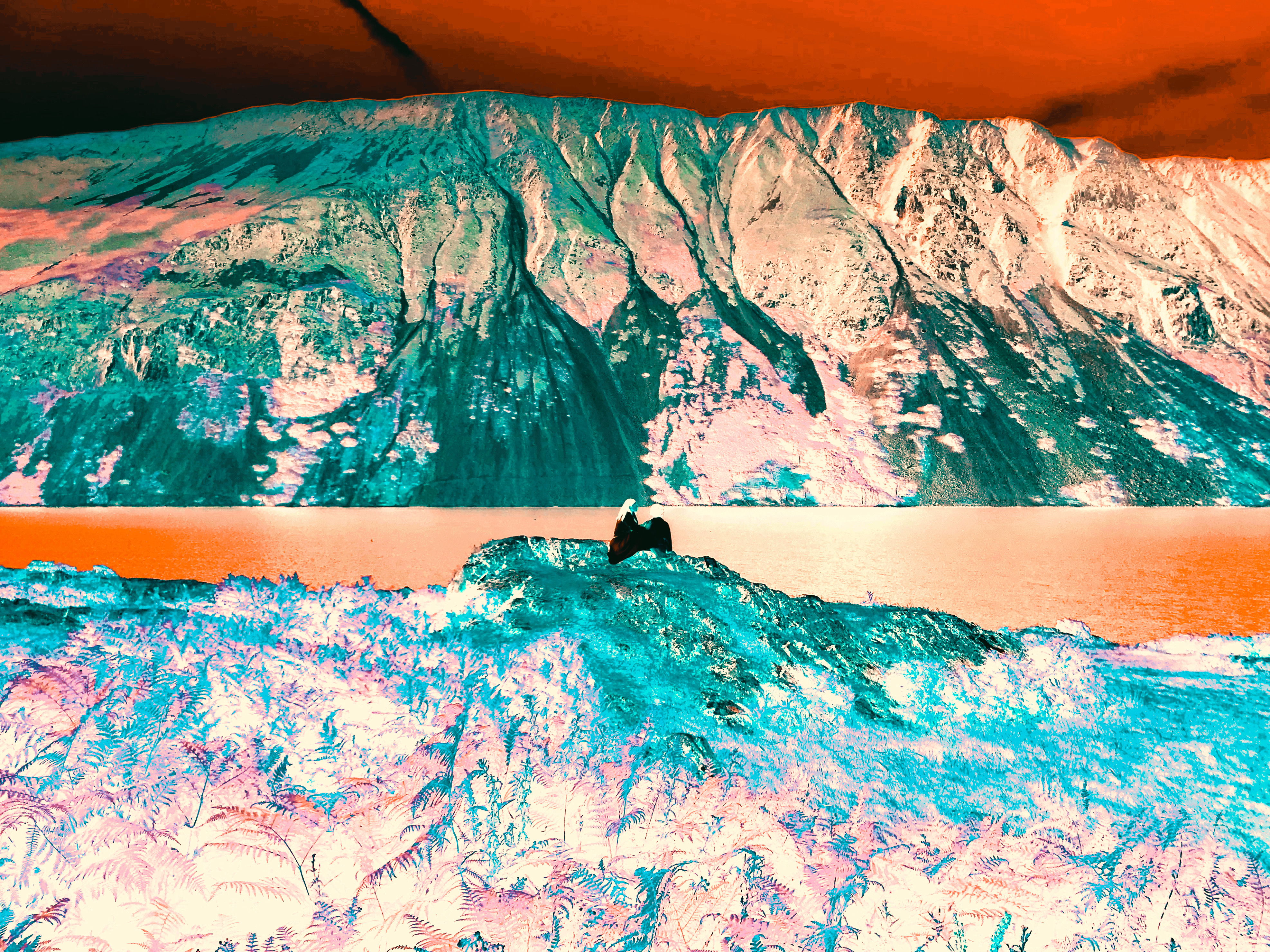
Himali Singh Soin, Static Range (2020-ongoing)
“What’s super interesting to me in the idea of the nuclear, is the degree of,” explains Soin of the story’s radioactive backbone. “Add one degree more and it’s absolute detonation. One degree less and it’s therapeutic.” Static Range speculates on this uncertain relationship between the device and the mountain, which have come to depend on each other symbiotically, cultivating a relationship that’s close to love. In the video component of Static Range, the image of the stamp breaks down over a fifteen-minute interval; the mountain metamorphs across a neon-washed nuclear colorwave. Throughout this chemical process, the word “India” ultimately disappears: it’s a slow erasure of the nation-state and its all-consuming violence. Is there a word for a slow and tender apocalypse, a kaleidoscopic change of form that’s suspended somewhere between love and annihilation?
I think it might be in catastrophe. The word ‘catastrophe’ carries a whole complex, layered history. It has links to the Greek word ‘kata’, meaning falling down, and it always connotes a scale that falls. So it’s about these large single events that have larger effects. I think the word catastrophe is just way more inclusive than the word disaster. Because disaster implies a single event, and catastrophe comes in waves.
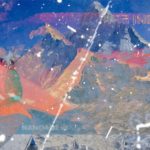
Himali Singh Soin, Static Range (2020-ongoing)
Alongside their respective video components, both we are opposite like that and Static Range bloom into multiple media including music, text, and performance. The element of liveness is key to Soin’s worlds: it enables an entanglement of bodies and stories that often translates into a multidimensional material overlay. In Silicontology (2017), performed at the New Worlds event series at Somerset House in the summer of 2022, Soin read the project’s manifesto, standing on a nest of cables that unfurled between two gangly palms washed in green light. During this reading, the Silicontology video—an assemblage of found footage sliced with static and overlaid with soundscapes that meditate on ideas of transmission and relay—was projected onto the artist. The beamer fractured the image over the landscape of body and building, its brightness intercepting Soin’s reading of the text. What resulted was an act of worlding in threes—language, light, and bodies—that seeded a temporary new environment for this story of communication to be retold.
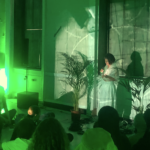
Himali Singh Soin, performance of Silicontology at Machine Magic / Techno Poetics, New Worlds event series (2022)
For Soin, the book format affords still another form of storytelling that dilates the intimate relationship among reader, narrator, and the body of the book. Static Range, published by subcontinentment books in June 2022, adopts the flip book format to conjure an analog iteration of the film’s nuclear mountain metamorphosis. The book is designed to decompose: once its wrapper is removed, readers will encounter four lickable stamps per page.
The Static Range publication is an invitation to absorb the story of Nanda Devi and its plutonium lover through a nonverbal knowledge exchange. Spit breaks down the mountain’s image, accelerating its dissolution; by licking the paper, the reader becomes an active agent and contaminant in the fraught relationship between the mountain’s image and the nationalistic forces attempting to leverage it. (The publication has caused something of a stir amongst authorities in India, who suggest that the consumption of the stamp is offensive to its status as a national icon.)
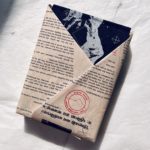
Himali Singh Soin, Static Range publication, 2022
“The edible book is actually a form of honoring land while critiquing a nation,” Singh Soin suggests. “Which brings us back to the idea that love might also be that same destruction. I love this idea of reading a book by licking it, especially at a time when saliva has become so contentious again. What does it mean for a British or American person to be licking a cold-war era Indian stamp? I don’t know, but it feels like dissent.”
Usually for me poetry is about non-linearity; it’s a way of thinking about these points where my interior and exterior worlds meet. I see my work as a moving, thinking body, and I’m using poetry as a vehicle to communicate those transmissions.
Today I was thinking about that in light of this experiment of sitting with you and trying to speak with you in this way. I was thinking about how things can travel between subjects, and how these subjects can travel between each other. How these subjects can over time dissolve and other subjects can join them. I was thinking about the idea of interstitiality that we’ve been discussing, and how it might be approached physically. And how it’s best expressed in landscape; in language.
Himali Singh Soin, Silicontology (2017)
How can we startle the unbelieving?
A poem composed by GPT-3, utilizing Himali Singh Soin’s poem, “how to startle the unbelieving”, as its input text.
“In 1850, just before telegraphy is standardised, the British Empire uses a clairvoyant girl from Calcutta as a porous channel through which to travel to the Arctic in search of Sir John Franklin, a British Royal Navy officer and Arctic explorer, and his two lost ships, Erebus and Terror. The wrecks of both ships were discovered in mid-September 2014 and 2016 respectively.
“how to startle the unbelieving” is a poem produced around the erasure of the only archive left about the girl in the Bombay Monthly Times. The cables of distance and desire are tangled in the word. The periphery and the core become porous thresholds through her natural electricity passes. Disembodied, she may be an early cyborg. Authority no longer rests in the antipodes of sender and receiver, but in the agent of interpretation in between, in the medium.” – Himali Singh Soin
The senses are the instruments of the scientific method.
Their record of things is the history of illusions.
Their limitation is truth.
The eyes,
the mind,
the measurements,
the hour and the clock, the formulary, the almanac,
the chart, the pinnacle, the compass,
the sextant and the pendulum, the map and the globe,
as instruments of the false, they are in themselves true.
The sense of time, the sense of space,
the sense of number, The ephemerides, logarithms and other tables,
systems, theories and hypotheses,
are the false.
Let it be known that Desire is the only method,
by which man can be truly and
startlingly
alarmed.
The earth is an echo,
It is a complete echo,
Repeat æolian tones,
Of the dead.
Science does not include what we are. It does not include it.
The Spirit is not scientific.
Science is natural.
We want the supernatural.
Science cannot do it.
From sea to sky stretched a gray-white mountain wall; from the base of the Upper Glacier to the snow-line and above, a dazzling white peak.
The wind then veered to the east and the mist increased.
It is the same penguin now living on the Antarctic beaches,
I knocked at the door and asked for the man of the house.
From the first cabin a white-bearded patriarch descended the stairs but they are all to be found in the museum.
A mouthful of horrible ash, the captain’s hospital bed at Calcutta.
BBC Voice:
We doubt whether she has ever been many miles from Calcutta in her life,
and certainly could have little or any knowledge of the scenes she described.
The name of the ship I cannot see; she is too much embedded in the ice.
Rivers have flowed boiling with beery foam.
The sun is black and looks menacing.
The verandah and the cabins seem turned into a vast marble tomb.
I see the monster now quite plainly, with one eye in the middle of his forehead, a mouth like a shark’s with eight teeth, and a big hump on his back.
we listen
to the rustle of the wind coming back in our ears. This is the appearance of things.
We are not interested in what appears as real.
We have no belief, nor do we wish to have any belief.
Are we justified in doubting
the possibility of doubting the reality of the finite and the transient? If we are not, we are not at all.
Thought is a desire to be elsewhere.
Fear is a desire to be
elsewhere.
How can we startle the unbelieving?
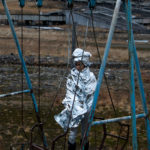
Himali Singh Soin, we are opposite like that (2017-2022)
We are opposite like that will be on view this autumn at the Thyssen-Bornemisza Museum in Madrid, as part of Soin’s exhibition, The Third Pole. Static Range will be presented this winter at the Art Institute of Chicago, as Himali Singh Soin’s debut solo exhibition in the US.
Himali Singh Soin, how to startle the unbelieving (2019)












